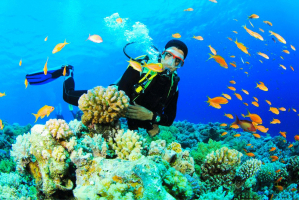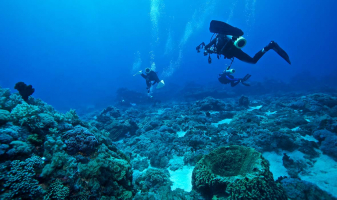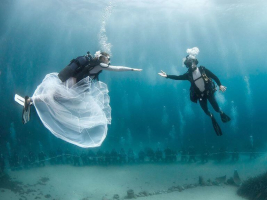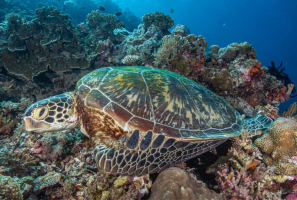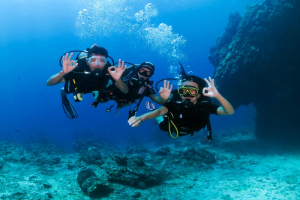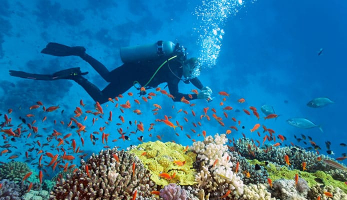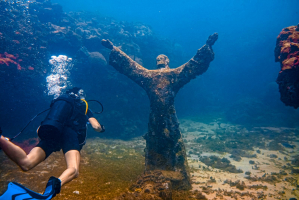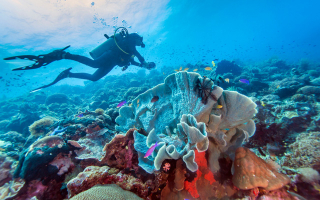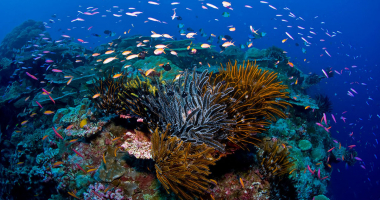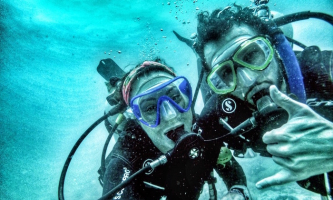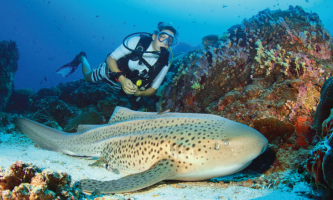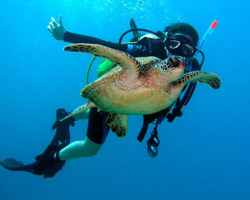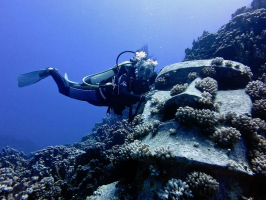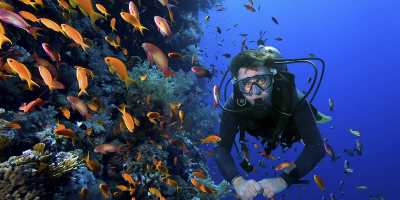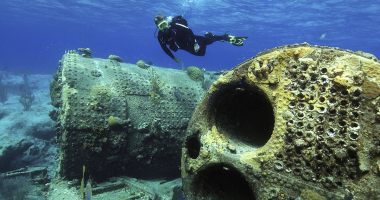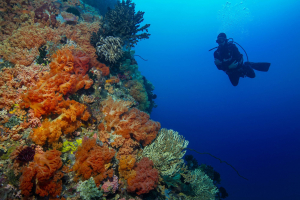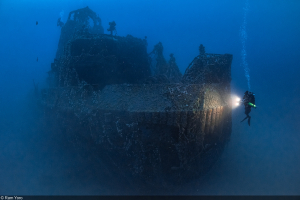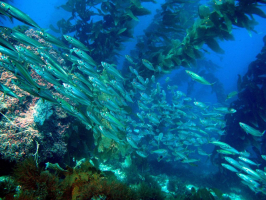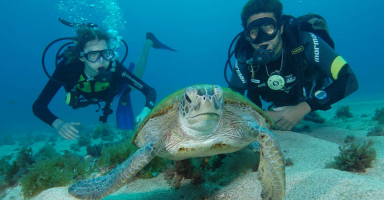Top 6 Best Dive Sites in American Samoa
Samoa's underwater beauty is breathtaking, and it is known for its pristine, unspoiled tropical landscape. Samoa is ideal for scuba diving, with beautiful ... read more...lagoons, deep water pinnacles, and expansive reef passages. From beautiful hard coral gardens to dramatic deepwater canyons, Samoa's aquatic landscape is diverse. There are over 300 different types of coral to discover, as well as over 1,000 different fish species and other marine life. There are a number of dive sites across the islands that offer fantastic visibility and conditions all year, making them suitable for divers of all skill levels as well as first-timers. Here are some of the best dive sites in American Samoa.
-
Fagatele Bay, among the best dive sites in American Samoa, is a 0.25-square-mile gem off Tutuila, Samoa's southwest coast. At least 200 species of coral have been identified in the bay, which are thought to be the center of a community of more than 1,400 species of algae and invertebrates, as well as more than 270 species of fish, according to surveys. Adult and juvenile damselfish, surgeonfish, wrasse, butterflyfish, and parrotfish are all common.
The bay can be accessed by land and is only a short drive from Pago Pago to the gate at a private residence in Futiga Village. You can snorkel over the reef-flat to deeper water when the water level is a little higher and the water is calm enough. If you are fortunate enough to be able to charter a dive tour, you can spend more time in this paradise. As with most dives in American Samoa, diving from a boat with a certified local divemaster is safer and always recommended. Even for experienced locals, shore diving can be difficult and dangerous due to strong currents that change with the tides.
You might see a curious blacktip reef shark, endangered hawksbill and green sea turtles, or spotted eagle rays gliding by while exploring the bay. Fagatele Bay is known to be visited by Pacific bottlenose and spinner dolphins. During the peak months of whale season, September and October, humpback whales may serenade you as you search for giant clams.
Location: J6RR+GCC, Fagatele Bay Trail, Taputimu, Western District, Samoa
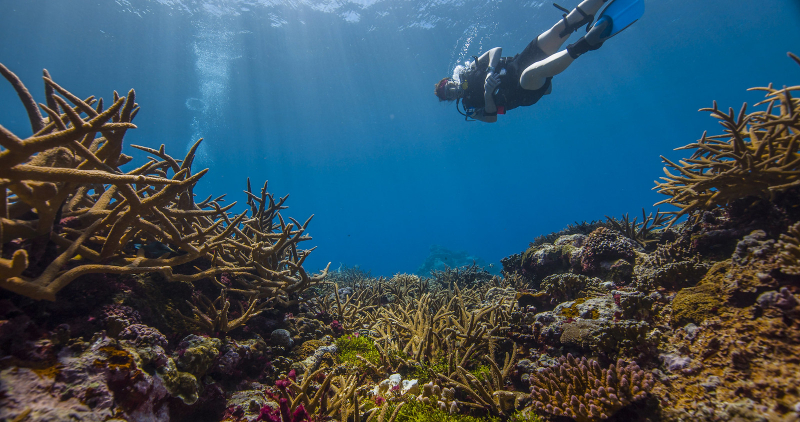
flikcr.com 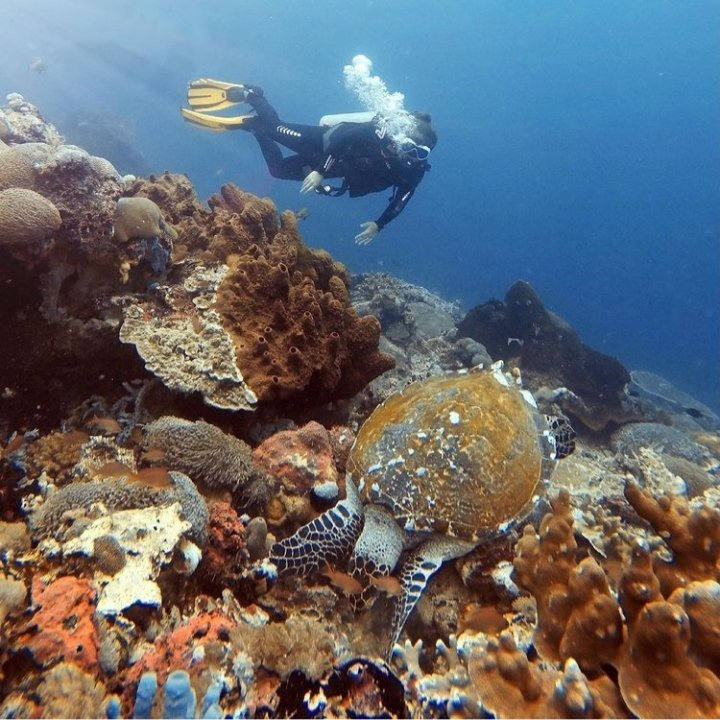
twitter.com -
Fogama’a, like Fagatele Bay, is just a short drive from Pago Pago. Two turtle images carved in a boulder, as well as prehistoric fale (house) foundations, can be found at Fogma’a. The sanctuary team frequently uses this location to teach local students about marine conservation and traditional and non-destructive fishing techniques that are an important part of everyday life.
Even at high tides, the back of the bay is shallow, but it can be snorkeled with care to see some smaller corals. People have compared the area to a small coral nursery. A deeper, sandy, and hard-bottomed area at the far end of the beach is popular for cooling off and viewing small fish. Where the back cove meets the larger bay, there is a wave that breaks. It is recommended that you avoid this area and instead travel by boat to the larger bay, where you can enjoy fishing and diving.Location: Fogama’a, American Samoa
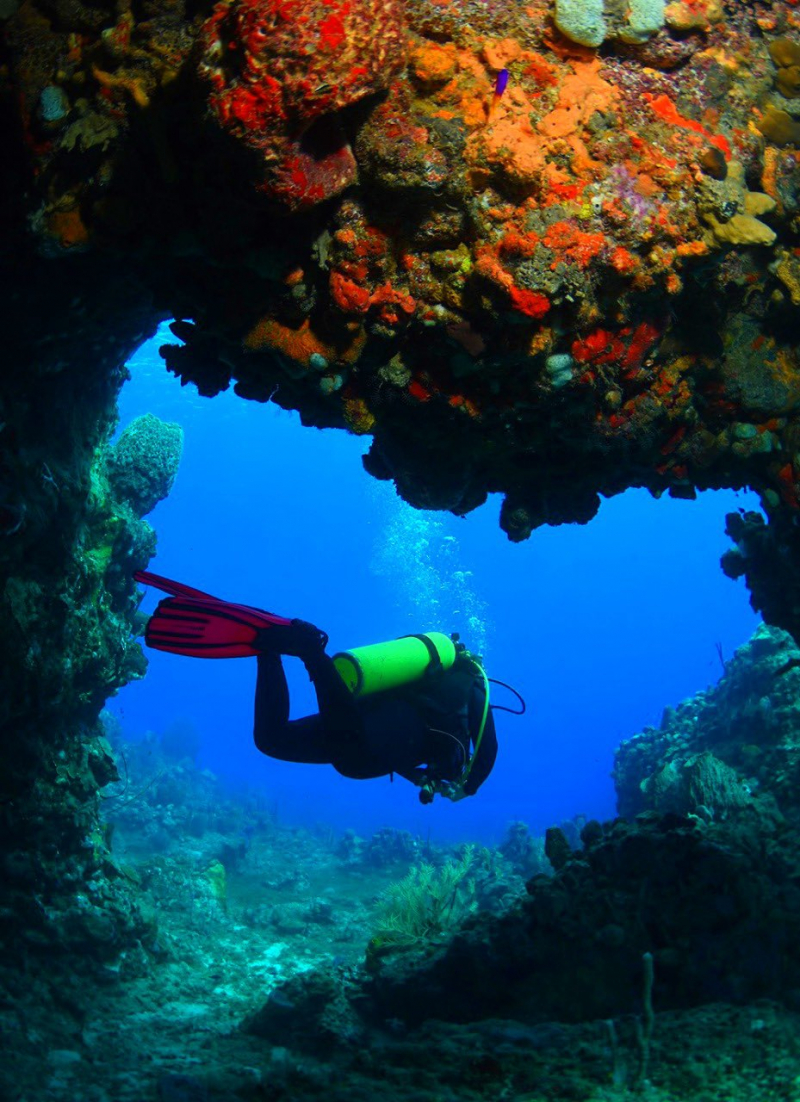
twitter.com 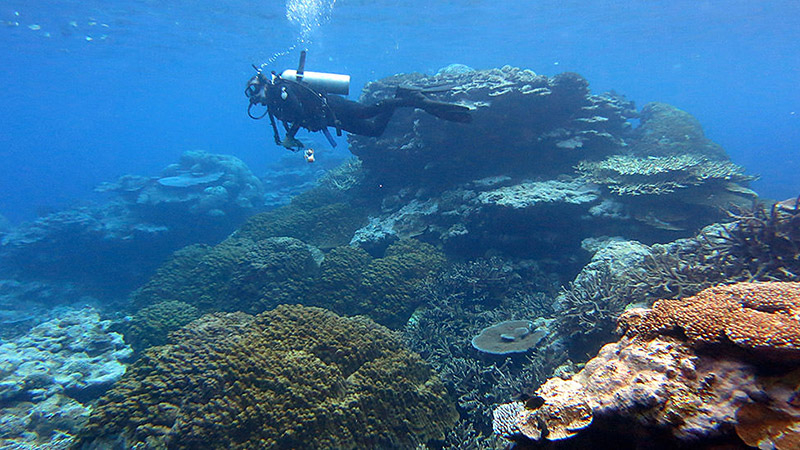
americansamoa.noaa.gov -
Aunu'u, among the best dive sites in American Samoa, is a small volcanic island located off Tutuila's east coast. You can drive 30 minutes from Pago Pago to Auasi Harbor, where you can catch a local alia boat for a few dollars to ferry you across the one-mile crossing. The currents in the area of Aunuu are extremely strong and fluctuate with the tides. Outside of the harbor area, swimming or snorkeling should only be done with an experienced local guide. For both safety and enjoyment, diving from a boat is the best option.
To the west of the harbor, you can explore the coral-covered slope while cruising down the sandy bottom to deeper depths. Under the right conditions, you can drop down and travel east into the current, passing the reef slope on your way to the larger boulder corals off the northeast side of the island before drifting back to the boat. You may see sea turtles and a variety of fish as you pass the reef slope on your way to the larger boulder corals off the northeast side of the island before drifting back to the boat.
Location: off the east coast of Tutuila, American Samoa, in the south-central Pacific Ocean
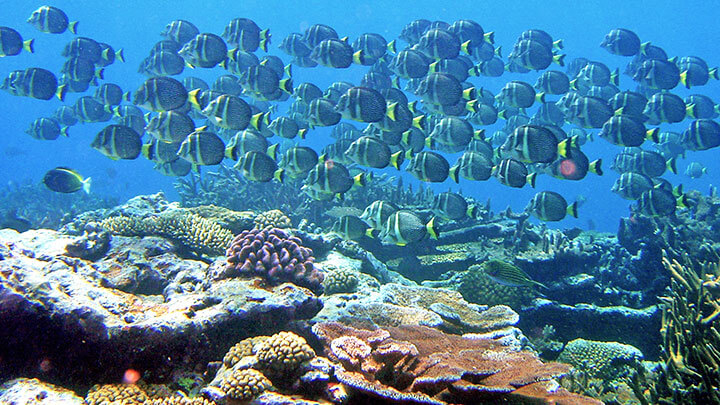
snorkelingdives.com 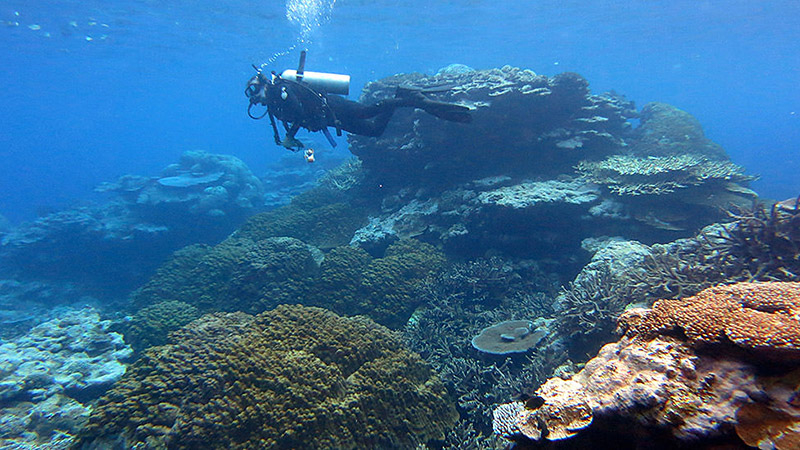
americansamoa.noaa.gov -
Swains Island is a small coral atoll in the Tokelau Islands of the South Pacific Ocean. Tokelau and the United States have had a territorial dispute over the island since 1925, when it was administered as part of American Samoa. The sanctuary encompasses a little more than 52 square miles of water surrounding Swains Island.
Researchers have discovered high coral cover and diversity in these waters, as well as large schools of predators, mostly barracudas, as well as jacks and snappers. In the nearshore waters, sharks and schools of bump head wrasse are common sights. Swain has a higher concentration of dogtooth tuna than the rest of American Samoa. Swains Island is known for its high levels of coral cover, fish biomass, and diversity. Swains Island is a low-lying coral atoll that was added to the sanctuary for protection in 2012 at the request of the Jennings family.
Location: Swains Island, American Samoa
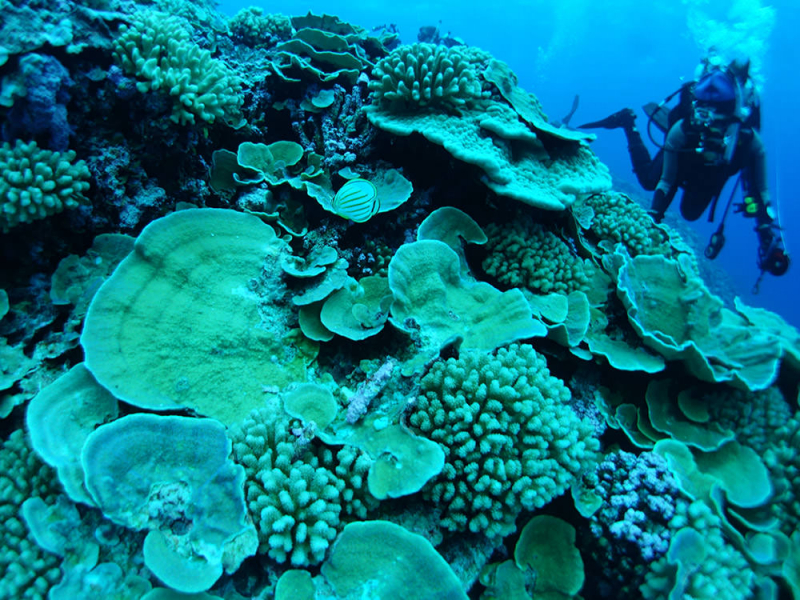
sanctuaries.noaa.gov 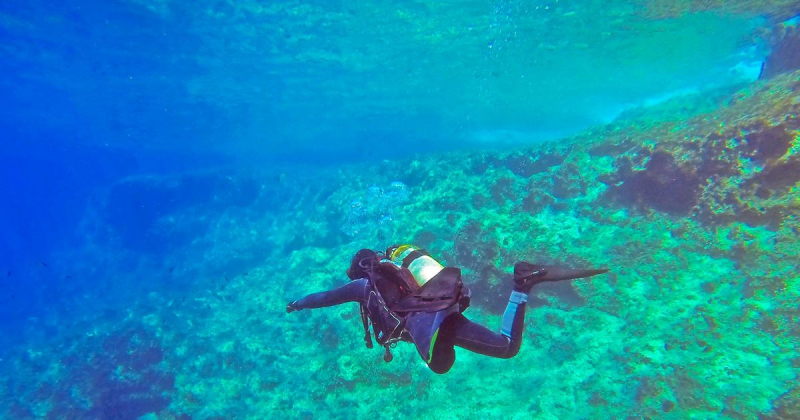
scubadiving.com -
Ta'u Island, considered among the best dive sites in American Samoa is located 70 miles east of Tutuila and 6.9 miles southeast of Olosega, and is part of the Manu'a Island group. The Ta'u Management Area covers about 14.6 square miles and includes both nearshore and deep waters from Si'ufa'alele Point south along the western coast, as well as deep waters beginning 0.25 mile offshore, adjacent to the nearshore waters of American Samoa's National Park, along the southern coast between Si'ufa'alele Point and Si'u Point.
The waters surrounding the tiny island of Ta'u are home to some of the world's oldest and most massive coral heads. Massive Porites coral heads can be found in the shallow waters off the southwestern coast of the island, just offshore of Afuli Cove. These massive colonies are among the world's oldest and largest known corals. The western side of Ta'u's southern coast has a unique coral community and is a regional hotspot for coral and fish diversity. The sanctuary acts as a deep-water buffer zone for the national park's marine areas while also providing nearshore and reef protection around the Porites coral heads.
Location: American Samoa, southwestern Pacific Ocean
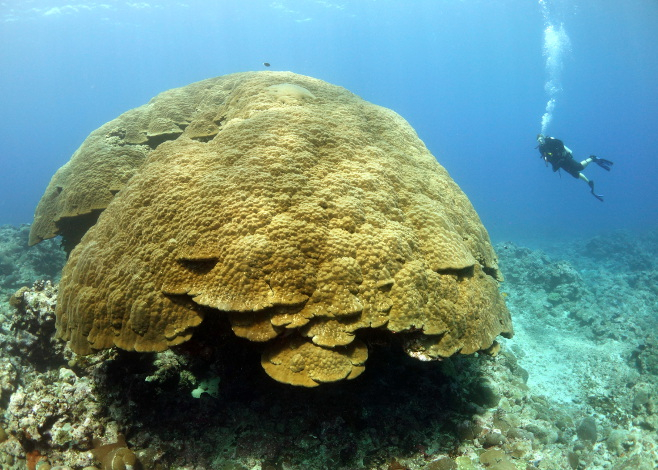
scubadiverlife.com 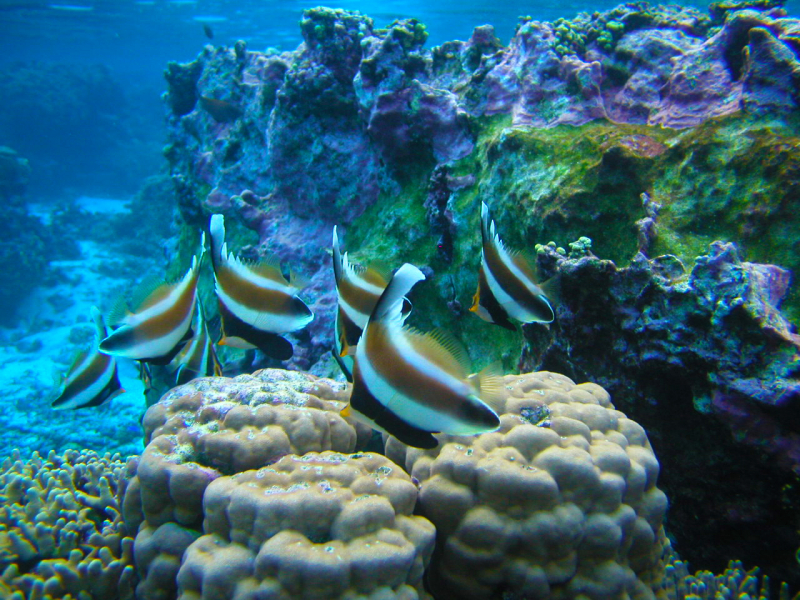
nps.gov -
The Rose Atoll (Muliāva), one of the best dive sites in American Samoa, is 150 miles east of Pago Pago Harbor. The rose-colored crustose coralline algae that dominate the area give the atoll its name. Rose Atoll is one of the world's smallest atolls, with only.03 square miles of land and 2.5 square miles of lagoon surrounded by a narrow barrier reef and protected by the US Fish and Wildlife Service as a National Wildlife Refuge. Scientists have documented a unique environment within the archipelago at Muliāva which includes large numbers of fish and a unique coral community with over 270 species of reef fish.
The Vailuluˊu Seamount, a submerged volcanic cone with a diverse biological community that includes crinoids, octocorals, sponges, and cutthroat eels, is also part of this area. In the crater of the seamount, a 1,100-foot-tall volcanic cone known as Nafanua has grown since 2003. Scientists predict that Nafanua will break the surface of the sea in the coming decades, forming a new island in the Samoan archipelago. Several types of hydrothermal vents on the seamount cone provide habitat for an unusual group of organisms, including microbial mats and polychaete worms.
Location: approximately 150 nautical miles east-southeast of Pago Pago Harbor, American Samoa
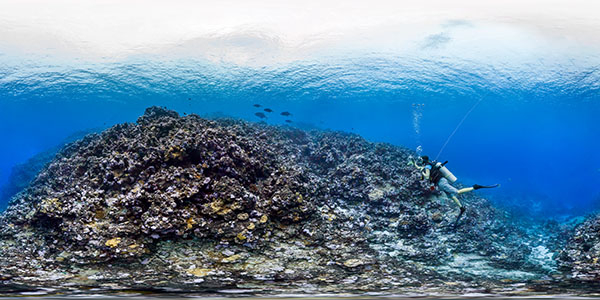
sanctuaries.noaa.gov 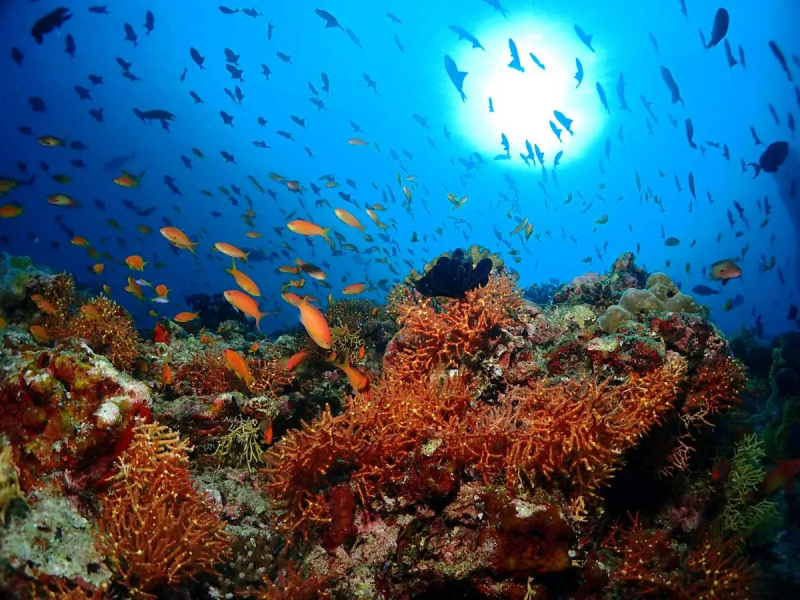
diveintolife.blog








